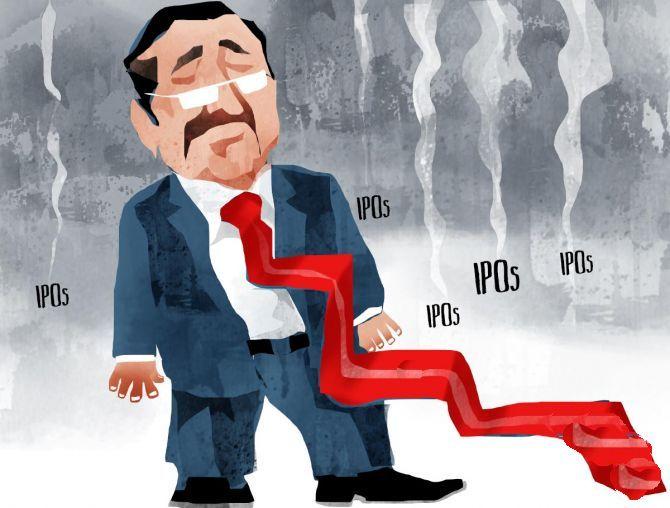What Lurks Behind In The Shadows Of IPO Frenzy, Why Loss-Making Startups In India Are Quick To Go The IPO Route? The High Stakes, Risks Involved vs. The Reward

In recent years, the appeal of Initial Public Offerings (IPOs) has captivated startups and investors alike.
The prospect of a successful IPO can undoubtedly serve as a ray of hope for fledgling companies, signalling an evolution from private ventures to publicly traded powerhouses; however, when it comes to loss-making startups, the road to an IPO is not as simple as it may seem.
What lurks in the shadows behind this IPO frenzy is tricky. Allowing these companies to go public without stringent scrutiny can lead to chronic deception, unfair debt settlements, and preferential exits for current investors, ultimately leaving new investors holding the bag.
) The IPO Buzz In 2024
The IPO Buzz In 2024
Continuing the IPO trend, market experts forecast that 2024 will see further activity, with as many as 100 companies making a bee line for the much anticipated ‘honey’ on their stock market debut.
The country is expected to see some new-age tech IPOs this year with the likes of Swiggy, Ola Electric, FirstCry, ixigo, Unicommerce, Ola Cabs, PayU, and MobiKwik marking their expedition of the Indian bourses.
For the market experts what is ticking the momentum are robust fundamentals that will play a key in attracting investors to startup IPOs, but they also highlight the importance of unique selling points (USPs) and first-mover advantages within specific industries.
The past month, too, has been eventful for tech startups aiming to list on the Indian stock exchanges. Go Digit, Awfis, and TBO Tek garnered attention with their market debuts, while ixigo secured approval from SEBI for its IPO.
Current trends indicate that the tech startup IPO space is just starting to gain significant momentum, with much more activity expected in the coming months.
Amid broader market caution, Travel Boutique Online (TBO Tek) made a remarkable market debut, listing at a premium of 50-55% above its issue price, with its public issue being subscribed 86.7 times.
Peak XV-backed coworking startup Awfis also saw a successful listing, with a 12.8% premium over its issue price and a subscription rate of 108 times.
 The Number Game
The Number Game
The IPO market has been a bit muted due to macroeconomic headwinds, but 2023 saw some rebound, and the same is likely to continue in 2024.
However, it’s worth noting that the size of IPOs has declined despite a rise in the number of public listings.
In 2023, for instance, India saw 57 mainboard IPOs raising INR 49,434 Cr, enduring a decline from INR 59,302 Cr raised by 40 companies a year ago.
As many as 29 mainboard listings have already occurred this year, collectively raising INR 27,652 Cr.
So, what is leading to offering smaller IPO listings?
Interestingly, in many recent IPOs of new-age tech startups, we have noticed companies reducing their IPO sizes after receiving SEBI approval.
For example, in Go Digit’s case, the insurtech unicorn cut the size of the fresh issue to shares worth INR 1,125 Cr and an offer for sale (OFS) component of 54 Mn shares.
Earlier, it was looking at raising INR 1,250 Cr from the fresh issue, along with an OFS component of 109.45 Mn shares.
Similarly, Awfis brought down the amount raised via fresh issue of shares to INR 128 Cr from INR 160 Cr earlier (as per DRHP).
However, the coworking space provider increased its OFS component slightly to 1.23 Cr shares from 1 Cr earlier.
On the other hand, travel tech major ixigo, whose IPO is scheduled to open next week on June 10, is looking to raise INR 120 Cr in primary capital, which is a sharp drop from INR 750 Cr it was aiming for in 2021.
While the companies largely attribute this revision to their decreased appetite for capital, it could also be attributed to the lukewarm response received by Paytm, Life Insurance Corporation of India (LIC), and a few others’ IPOs in 2021 and 2022.
) Now that we have understood the overall trend that 2024 holds, we come to the most important questions –
Now that we have understood the overall trend that 2024 holds, we come to the most important questions –
1) What is the temptation of an IPO
2) Why do loss-making startups want to go the IPO route even before registering profits?
3) What lurks in the shadows of IPOs
4) Why must market regulator SEBI hold tighter reins for startups going the IPO route?
The Temptation of the IPO
For companies, including startups, the allure of an IPO is many.
It provides a substantial influx of capital, enhances visibility and credibility, and offers early investors a chance to realize significant returns.
Hence, in theory, even loss-making startups can benefit from going public if they have a clear path to profitability and a compelling growth story.
The market has seen successful IPOs from companies that were not initially profitable, such as Amazon and Tesla, which have since become industry giants; however, is there one example in India where a startup has gone the IPO route and made a significant impact?
To put it into perspective, eight startups registered profitability in Q1 FY24.
Foodtech major Zomato’s financial numbers came as a surprise it turned profitable for the first time in the quarter ending June this year. For context, the firm reported a loss of Rs 188 crore during Q4 FY23.
The much older MapMyIndia (founded in 1995) was on top with Rs 32 crore profit, followed by EaseMyTrip, Nazara, CarTrade and ideaForge.
Nykaa reported Rs 5.4 crore profit whereas Tracxn registered only Rs 0.69 crore profit in Q1 FY24.
While Zomato and Nykaa reported profits at a high scale, high revenue-generating companies such as Paytm (One97 Communications), Policybazaar (PB Fintech), Delhivery, and Freshworks couldn’t reach profitability as of Q1 FY24.
Paytm, which is the second highest revenue-generating company in the list, saw its losses rise over 2X to Rs 358.4 crore during Q1 FY24 against Rs 167.5 crore in the previous quarter.
However, compared to the corresponding quarter of the previous fiscal year (Q1 FY23), the firm’s losses contracted by 44.5%.

The Risks of Deception
However, the optimism surrounding IPOs can often mask the underlying risks.
Loss-making startups may resort to aggressive financial engineering and marketing tactics to present a more favourable picture to potential investors.
The same can be done by overestimating future growth, underreporting liabilities, or obscuring the true extent of operational challenges.
The result is a deceptive narrative that entices investors to pour money into ventures that may never achieve sustainable profitability.
The Danger of Debt Settlements
One of the most insidious risks is the potential for IPO proceeds to be used primarily to settle existing debts rather than to fuel growth.
While it has been seen that many startups mark significant proceeds from the IPO toward R&D in the DHRP papers, the numbers are never quantifiable, and that leads to a problem.
Hence, when a loss-making startup goes public, a significant portion of the raised capital can be directed towards paying off creditors, leaving less money for strategic investments and operational improvements.
This not only hampers the company’s ability to achieve long-term success but may also mislead new investors about the true financial health of the business.
Favouring Early Investors
Moreover, it has been seen that the IPO route disproportionately benefits early investors, including venture capitalists and company insiders, at the expense of new shareholders.
These early stakeholders often use the IPO as an exit strategy, cashing out their shares at inflated prices, thus creating a scenario where the initial investors profit handsomely while new investors bear the brunt of the company’s ongoing losses and financial instability.
The Need For Rigorous Oversight And SEBI’s Role
Given these risks, it is important to implement rigorous oversight and regulatory measures for loss-making startups seeking to go public.
Regulators must ensure that these companies provide transparent and accurate financial disclosures, outlining both their current financial status and realistic paths to profitability.
A more stringent approach and enhanced scrutiny of financial statements, business models, and growth projections can help prevent deceptive practices and protect the interests of new investors.
Hence, the onus falls on SEBI, as the challenge lies in striking a balance between encouraging innovation and protecting investors.
Many experts claim that while loss-making startups should not be categorically barred from going public, as doing so could stifle entrepreneurial ventures and technological advancements, a more cautious and transparent approach is essential to mitigate the risks and ensure that the public markets remain a fair and equitable platform for investment.
Notably, the likes of Swiggy, Ola Electric, FirstCry, ixigo, Unicommerce, Ola Cabs, PayU, and MobiKwik are likely to go public this year.
The Last Bit, Irrespective of which side of the coin one favours, the bottom line is allowing loss-making startups to pursue IPOs without adequate safeguards can lead to chronic deception, unfair debt settlements, and preferential exits for early investors.
The stakes are high, and by ensuring stringent regulatory oversight and promoting transparency, public investors can be protected and not hold on to losses.




